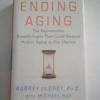Bottom line, there is a maximum density to black holes, because you can't squeeze protons and neutrons to be smaller than what they are. That density is roughly equal to that of atomic nuclei (obviously) and it means the mass of one cubic METER of the densest black hole is 10^18 kilograms.
Nefastor
Wow, call the physicists, we need a rewrite. Quarks and superstrings simply don't count it seems. Please tell me that you know that protons and neutrons are not elementary particles. I think you may be getting a bit confused with Bose Einstein condensate. When you pack superstrings, then you are talking small - really small.
So yeah, I think 1cm3 is entirely realistic.
The thing is, we don't actually know the exact way excessive gravity might break down matter. Take the example of a landslide : gravity brings down tons of rock, but the resulting pile of rock is no where near as dense as what we (humans) could achieve using machines to grind the stone to fine dust and compress it into tight blocks.
The fact that we can, in the lab, split an atom (for instance) does NOT automatically mean the same atom can be split naturally. Even if it turns out (as we know) that atoms can be split without human intervention, the requirements for that to happen outside of a lab have nothing in common with the requirements of a lab experiment.
Take neutron stars for instance : while their surface gravity is enormous, it is not sufficient to break subatomic particles the way a collider does. Also, singularities (black-holes proper) are supposed to form out of low density matter (i.e. gaseous remains of a dead star), whereas bodies containing heavier atoms (like iron) tend to become neutron stars. If Earth was a gas giant, I'd say an LHC MBH might turn it into a black hole in which case, yes, it might end-up as small as a cubic centimeter. But since Earth is made of heavier atoms, it's more likely we'd end-up a neutron star, in which case I stand by calculation of a 6 million cubic meters minimal final volume.
At any rate, that one cubic centimeter figure is still suspicious. Unless I'm mistaken, it assumes there are no "sub-sub-subatomic particles" that quarks and bosons might split into, or that we know what these are and how they behave. Fact is, it's only theory. For all we know, the LHC will help us find the Higgs Boson and then we'll see it breaks down further into Mickey Mouse particles with negative mass that would effectively blow-up any black-hole massive enough to produce them, same way squeezing Uranium very hard is a Bad Thing ™.
Oh, and I didn't even know superstrings could be "packed". Exactly how does that work ?
Nefastor

















































